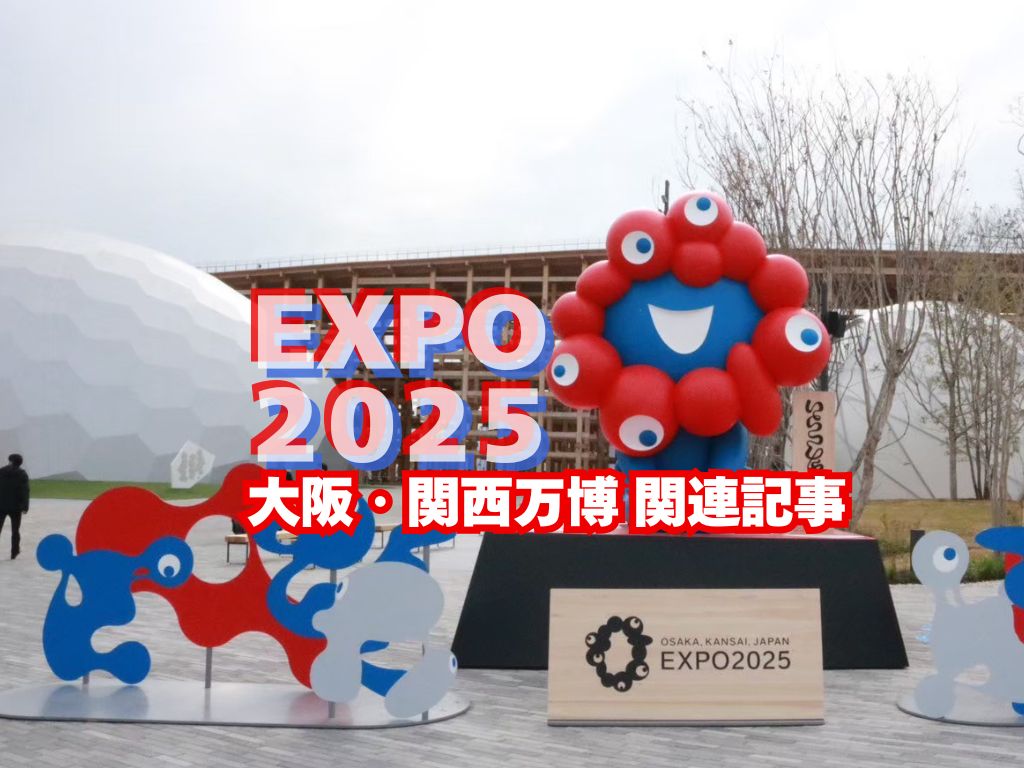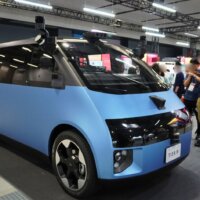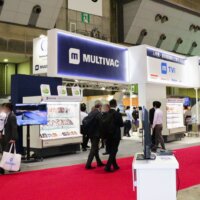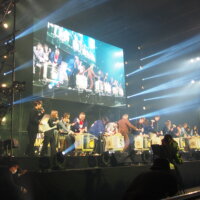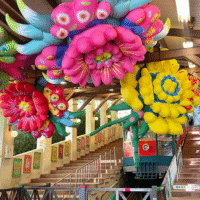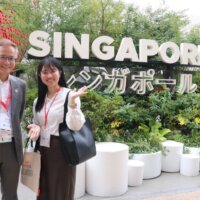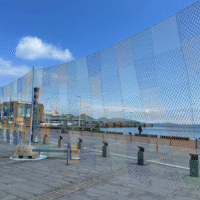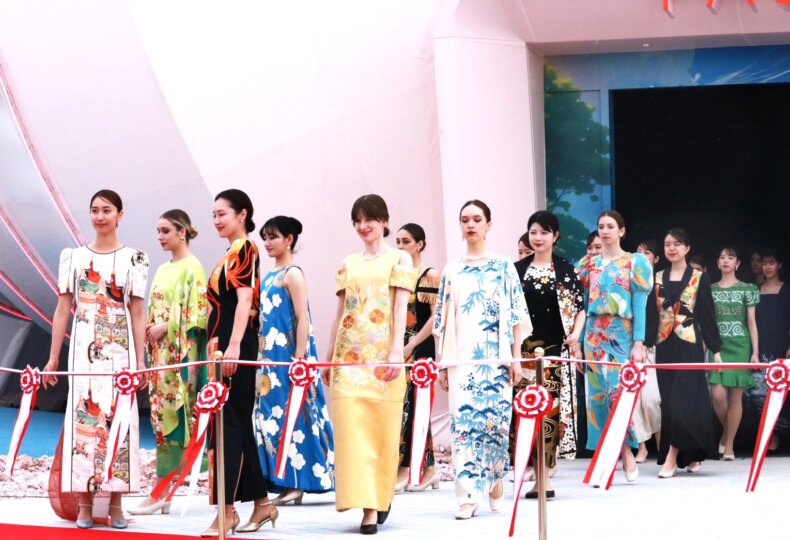
Preview Report: Pasona Group Pavilion “PASONA NATUREVERSE” at Expo 2025 Osaka, Kansai — Highlights and Exhibits that Invite Us to Reflect on Life
Pasona Group Inc. will present its private pavilion, PASONA NATUREVERSE, at Expo 2025 Osaka, Kansai, Japan. At a media unveiling, the pavilion’s full experience was introduced.
The concept is “Thank You, Life.” The ammonite-inspired spiral architecture symbolizes life itself, and the pavilion’s navigator is Neo Atom, a reimagined Atom brought to life by Black Jack. The exhibition resonates with the Expo’s overall theme, “Designing Future Society for Our Lives,” and features centerpiece installations such as a moving iPS heart model, a flying operating room, and a surgery suite of the future.
This video contains sound. We’ve put together a short video of the media preview; watching it first will make the walkthrough easier to grasp.
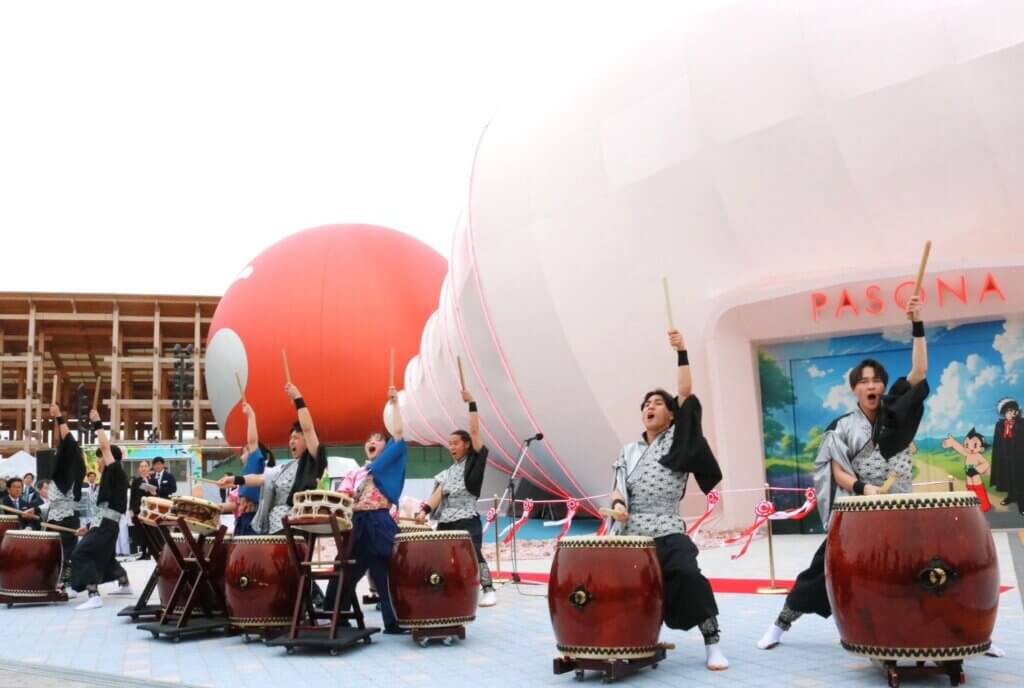
The program opened with a wadaiko performance by the Hyogo-based taiko ensemble 鼓淡 (Kotan).
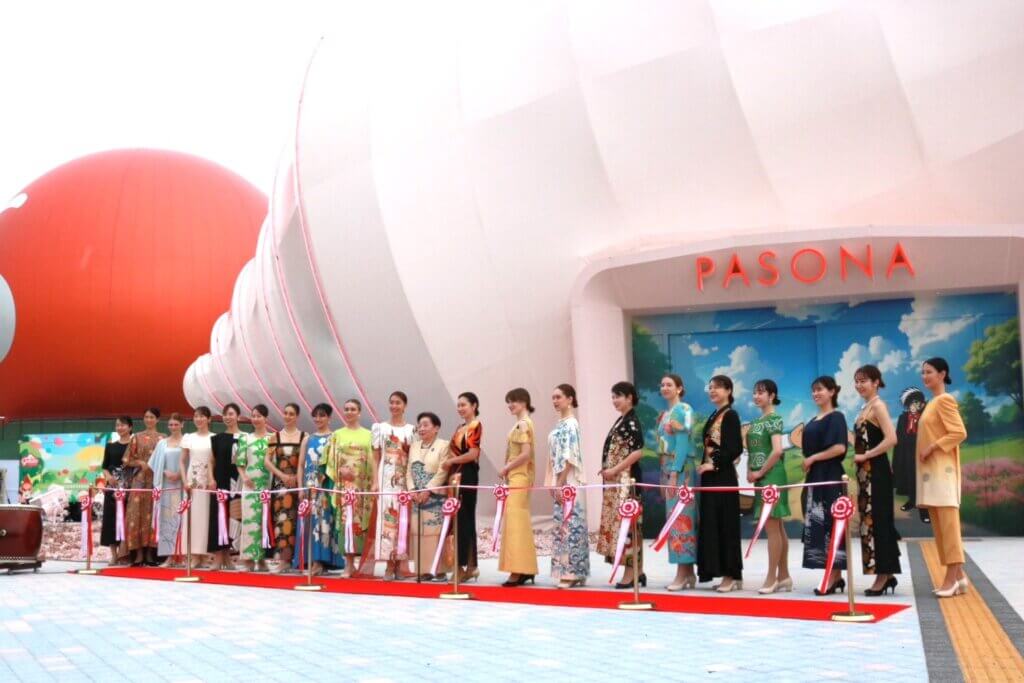
Photo session with Harumi Fujimoto, a 98-year-old active designer who created the costumes, alongside models wearing her designs.
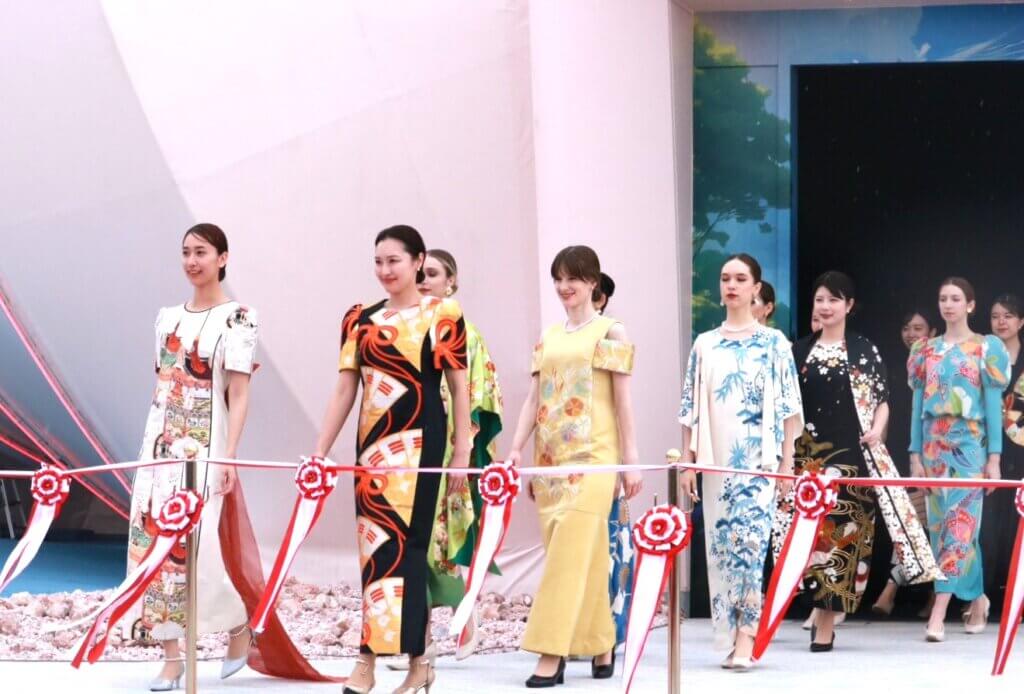
The haute couture dresses will be worn by attendants at Pasona Group’s pavilion at Expo 2025 Osaka, Kansai for VIP hospitality.
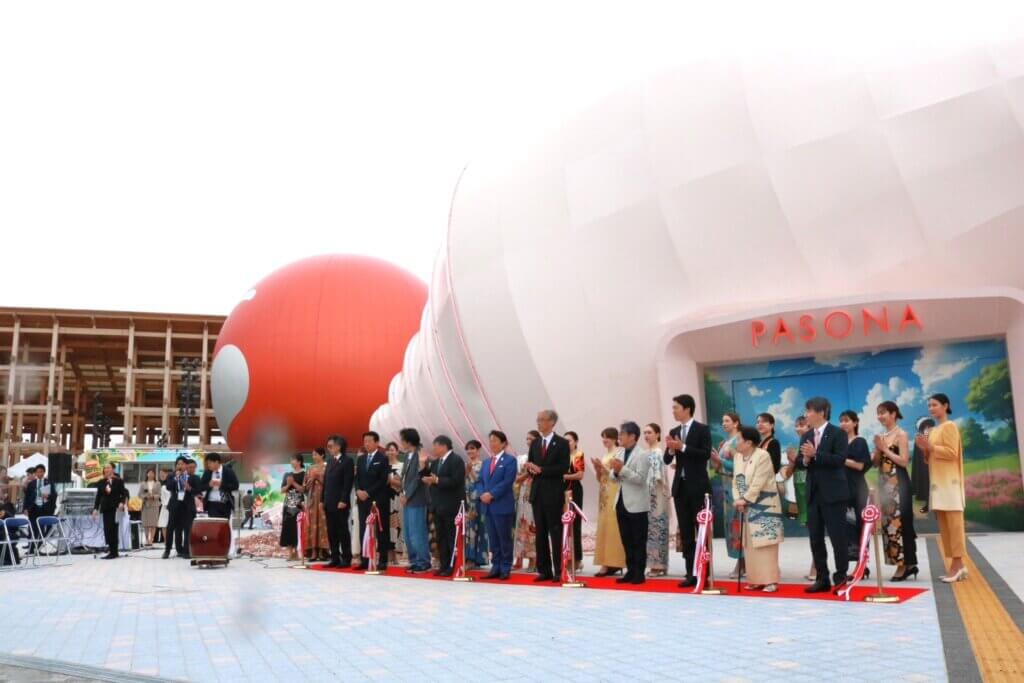
Ribbon-cutting ceremony.
First look at the pavilion: starting with the exterior
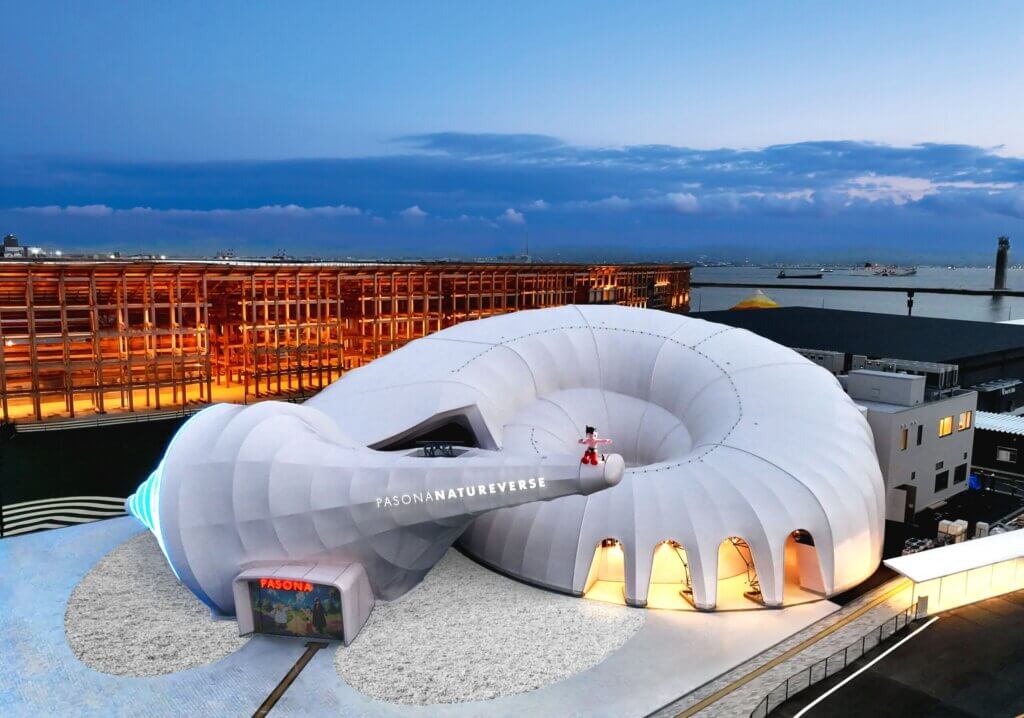
The exterior takes its motif from an ammonite spiral, a symbol of life.
At the apex of the pavilion, Astro Boy greets visitors, pointing toward Awaji Island. From an SDGs standpoint, the pavilion is slated to be relocated to Awaji after the Expo; the storyline casts Neo Atom as the guide awaiting visitors there.
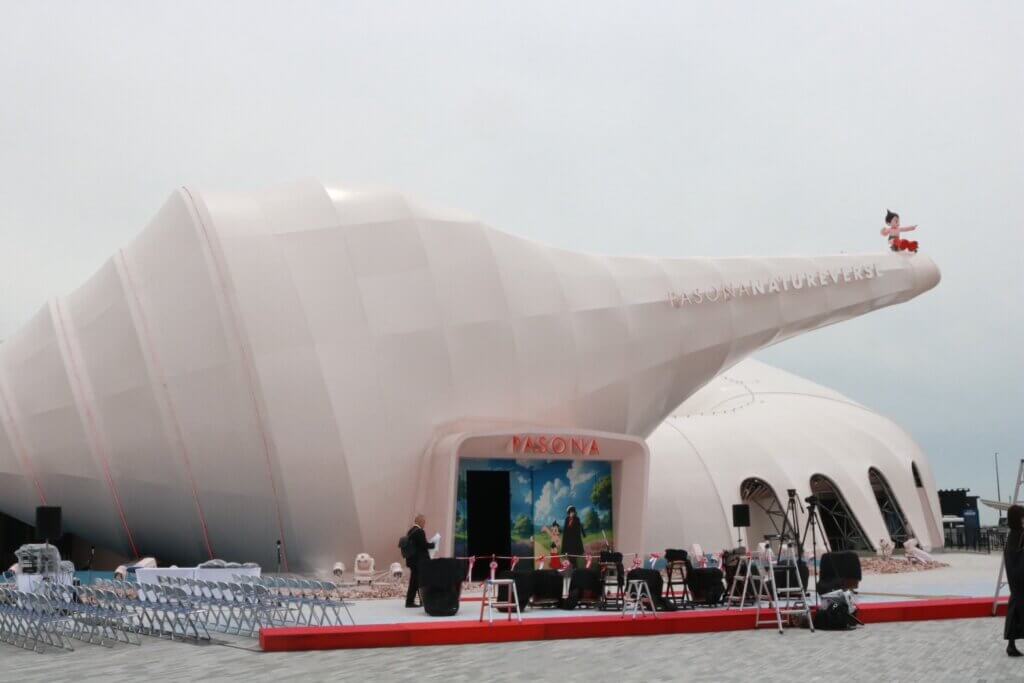
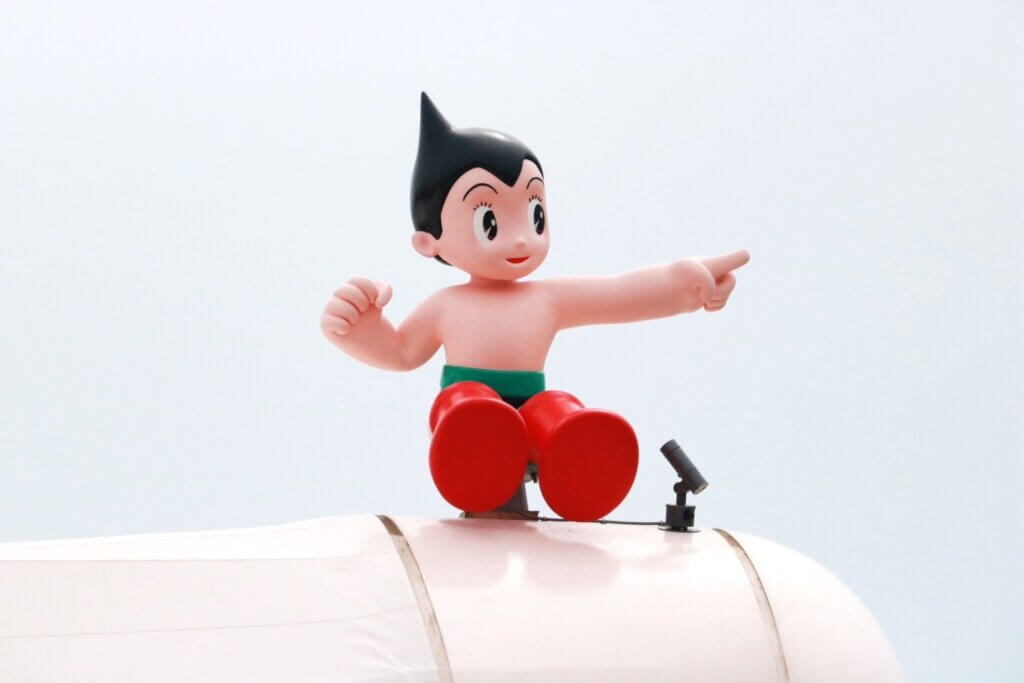
The visitor route follows the spiral, progressing from the outer curve toward the inner core.
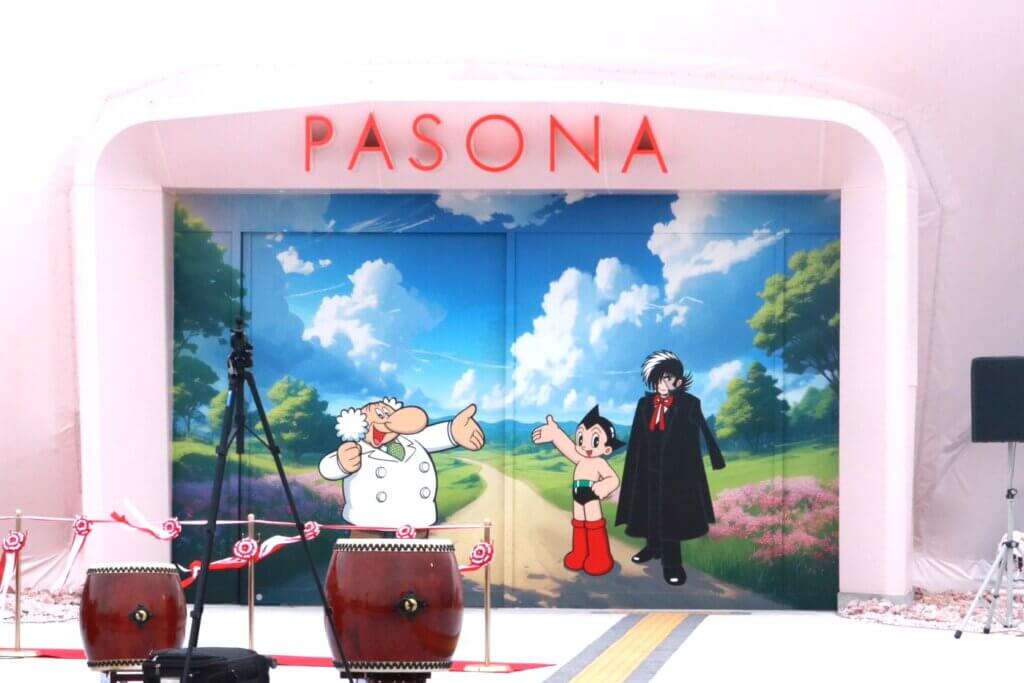
Neo Atom and Black Jack as navigators
Neo Atom appears as a version of Atom equipped with an iPS heart, surgically implanted by Black Jack. The storyline—an original by Tezuka Productions—builds on the world that follows the 1972 finale of Osamu Tezuka’s Astro Boy.
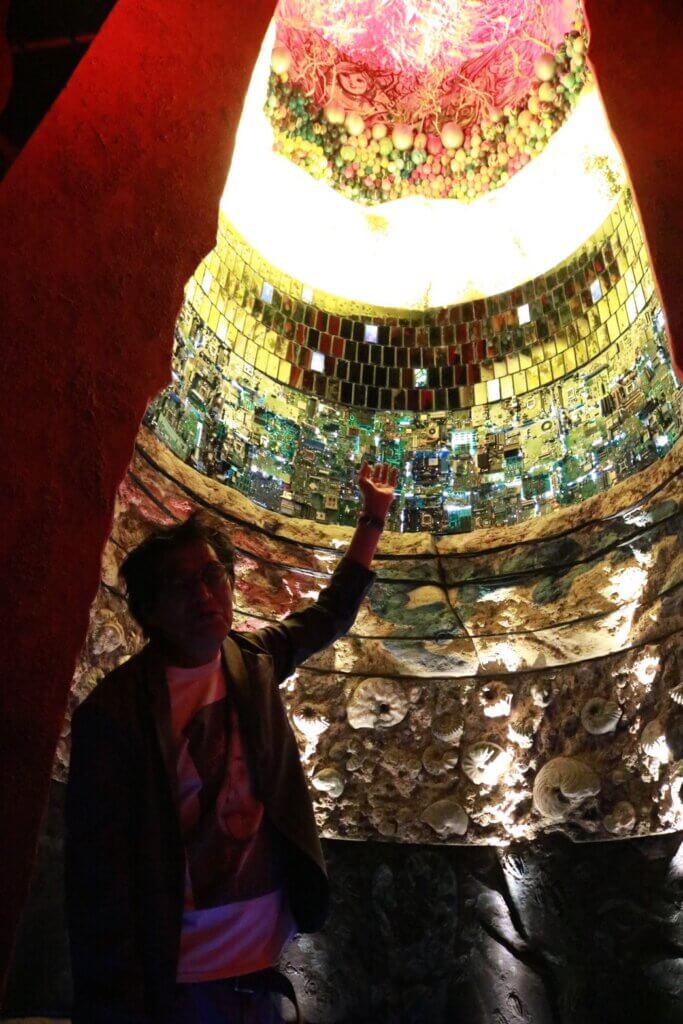
“Tree of Life Evolution”: Ten strata seen from a hundred million years ahead
One of the pavilion’s centerpieces is the monumental installation called “Tree of Life Evolution,” supervised by Professor Takashi Ikegami of the University of Tokyo (Graduate School of Arts and Sciences, Department of General Systems Sciences), who is also active as an artist.
From the glass floor to the ceiling, strata labeled 0 through 10 stack upward. Mirrors reflect the scene above and below, creating the impression of endless depth. The composition invites visitors to reexamine the present from the vantage point of a hundred million years in the future.
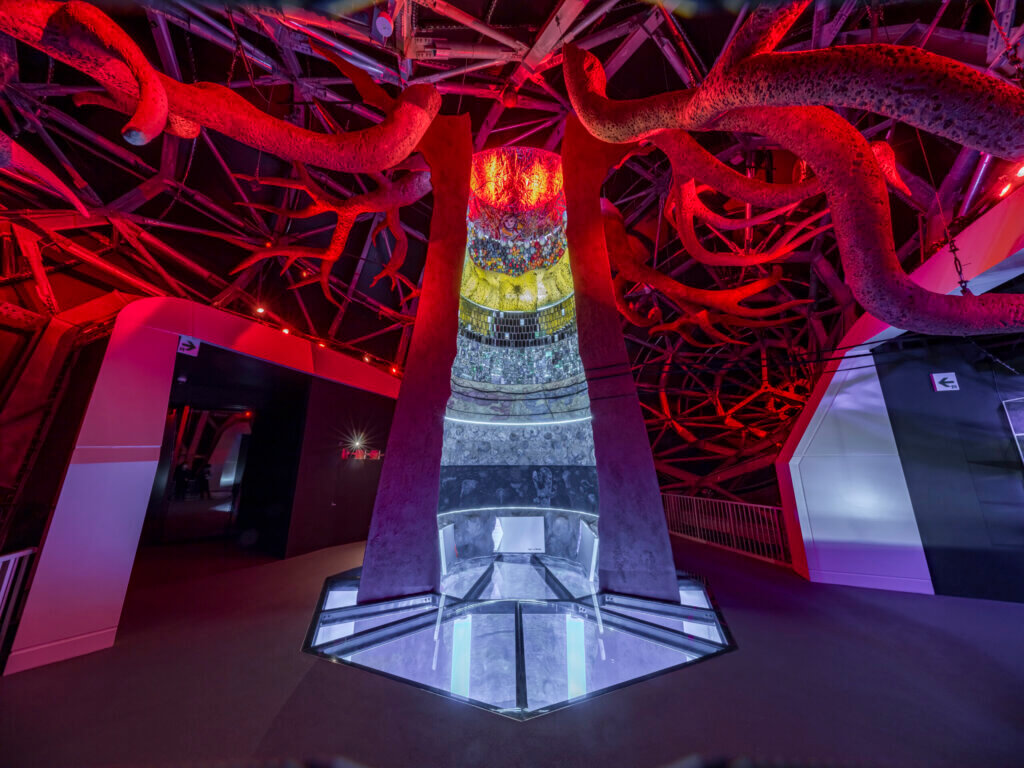
The lowest strata recreate a lifeless Earth and the emergence of life in the Cambrian period, with emblematic ammonites in view. The fourth stratum—rendered in black—marks the arrival of humans and the development of civilization and culture. Here, 2,063 black threads represent the tally of wars, nuclear tests, and other human mistakes. Beyond this dark layer lies the future: from the seventh stratum onward, scenarios depict the extinction of bees and other species and, ultimately, Earth being engulfed by the Sun—followed by the sprouting of new life, restarting the cycle from stratum 0.
The pavilion opens with a space that asks how each of us, with finite lives, chooses to live toward the future.
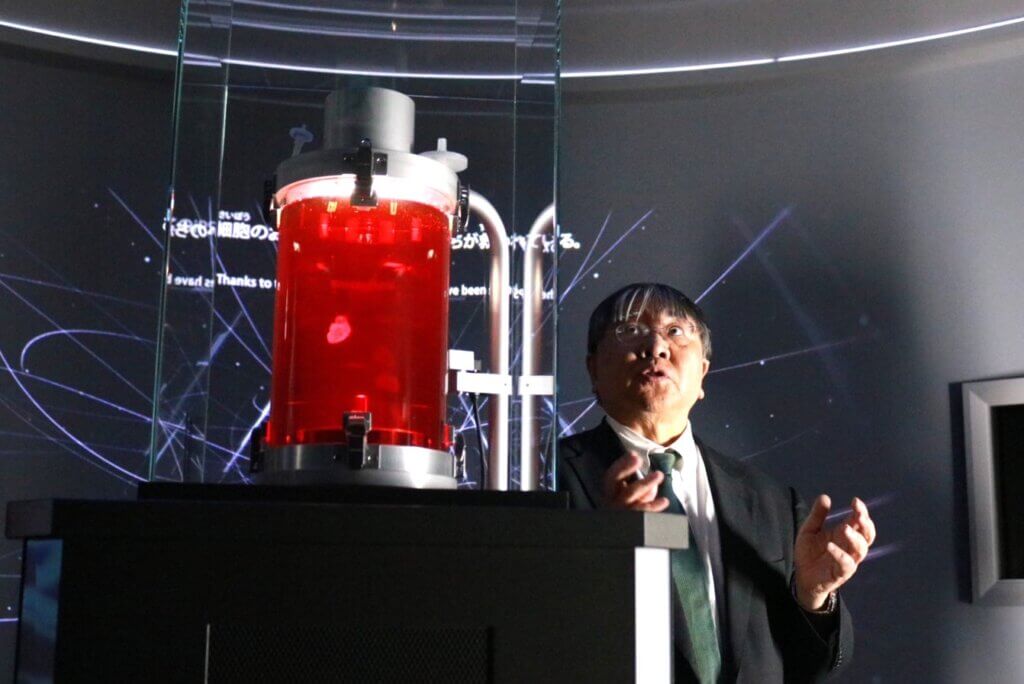
Feeling “life” in the iPS Memorial Museum: a beating iPS heart
Visitors can witness a cultured “iPS heart” beating in the iPS Memorial Museum, a project advanced by Osaka University Emeritus Professor Yoshiki Sawa, who serves as the pavilion’s executive producer. He shared his hopes that children will first feel astonishment, then a sense of the future—and embrace the mindset of becoming game changers. He also hopes to see more outstanding scientists emerge to carry these technologies forward.
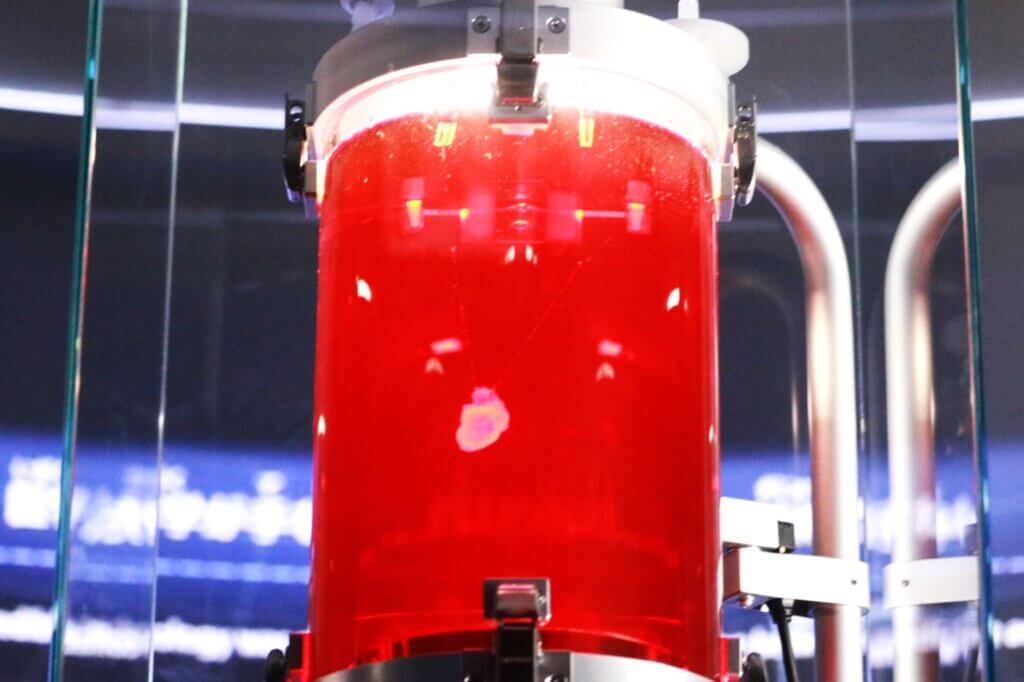
The realization of this exhibit was strongly backed by Pasona Group’s representative, Mr. Nambu. When he saw the iPS heart technology, his reaction—“This is it!”—helped set the pavilion concept in motion. Over the six years since, Professor Sawa has visited Awaji Island roughly twice a month and held one or two web meetings per week to build the project.
“Seeing a living, beating heart up close will likely be a first for many people. I hope they feel the presence of life—and a sense of gratitude.”
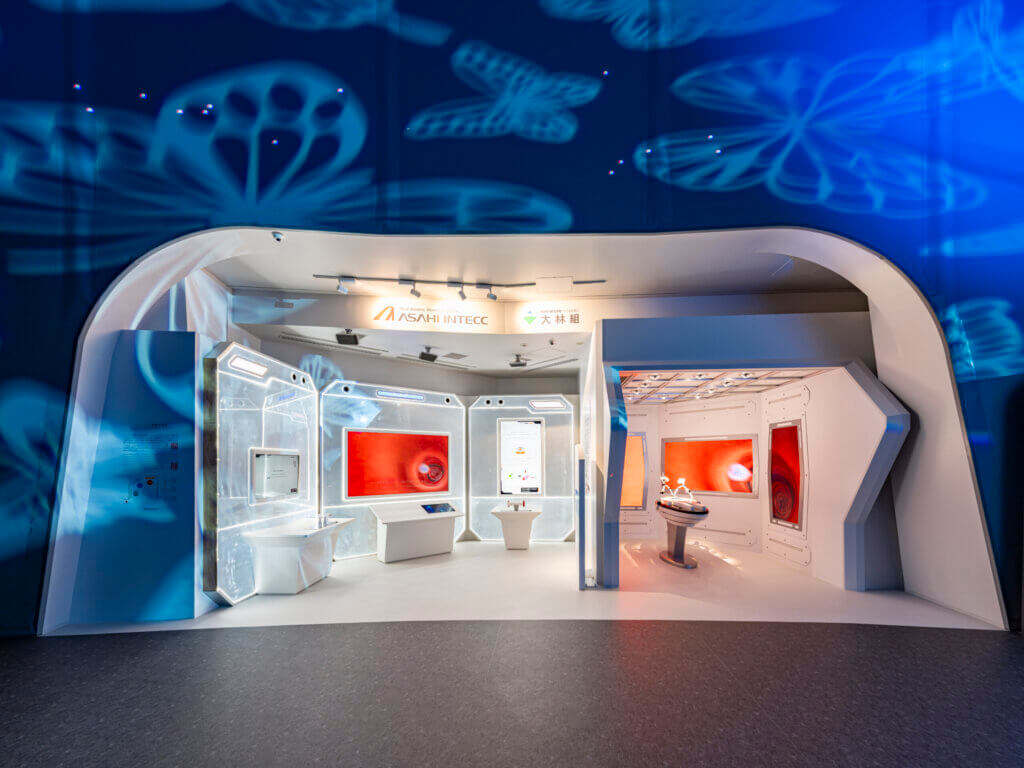
Future medicine: a flying operating room and a remote operation center (Asahi Intecc)
This exhibit imagines a “flying operating room” and a “remote operation center.” The concept points to a future where high-precision surgery can be delivered quickly even in hard-to-reach settings—during disasters, on remote islands, or at sea.
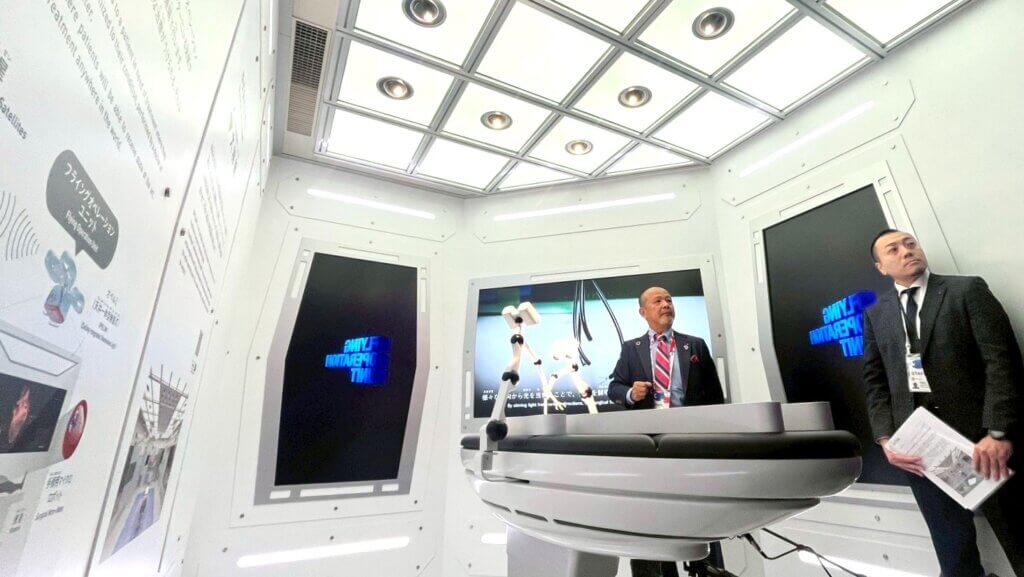
Underlying technologies include guidewires used in catheter-based procedures and a shadowless surgical lighting system called Operumi.
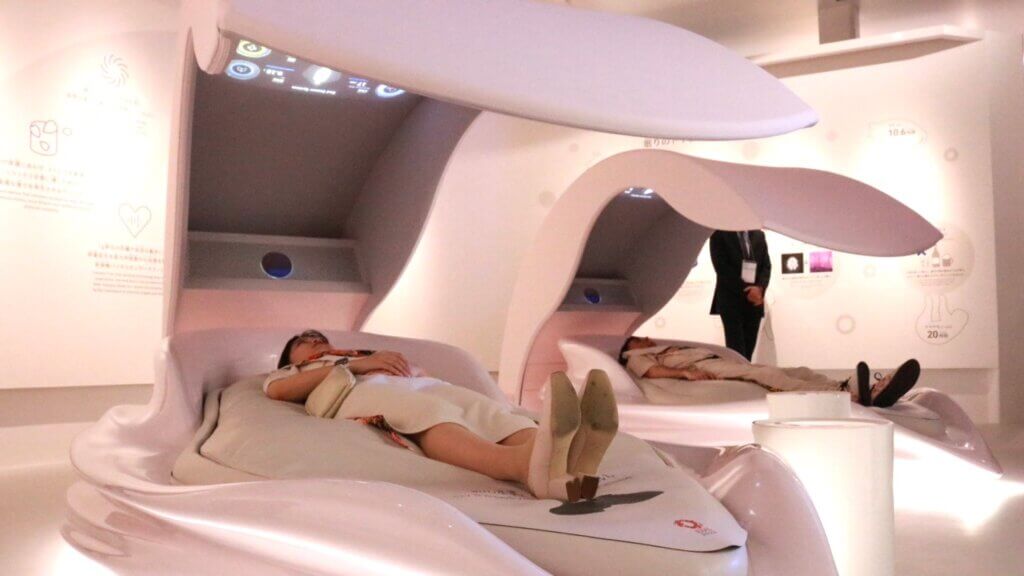
Future of Sleep: Optimized rest based on sleep mechanisms (MinebeaMitsumi)
The exhibit introduces technologies that guide each person toward optimal sleep tailored to their physical condition. Under soft lighting, two concept beds are installed, and visitors can lie down to experience a simulated sensor-based sleep assessment.
Multiple advanced devices work in concert: adaptive lighting control that adjusts intensity and angle according to sleep state; an ultra-compact vibration device that directs sound only to the person in bed; sensors that monitor temperature and humidity; and a system that diffuses scent. Together, they orchestrate an ideal sleep environment through all five senses.
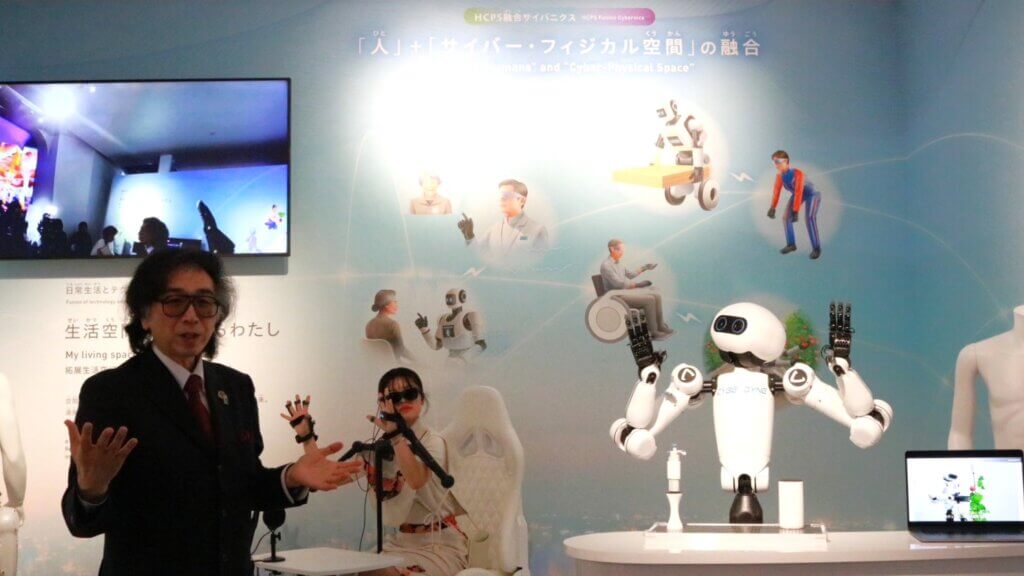
Future Me: A second self untethered by location, controlling multiple robots (CYBERDYNE)
This hands-on exhibit lets visitors wear a “master device” that transmits their movements to robots installed at a distance. The system reads human motion signals, which the robots then reproduce with high fidelity. One operator can control multiple robots at the same time, enabling work to be performed remotely and allowing specialists to respond even when they are not on site—an approach that could help address labor shortages.
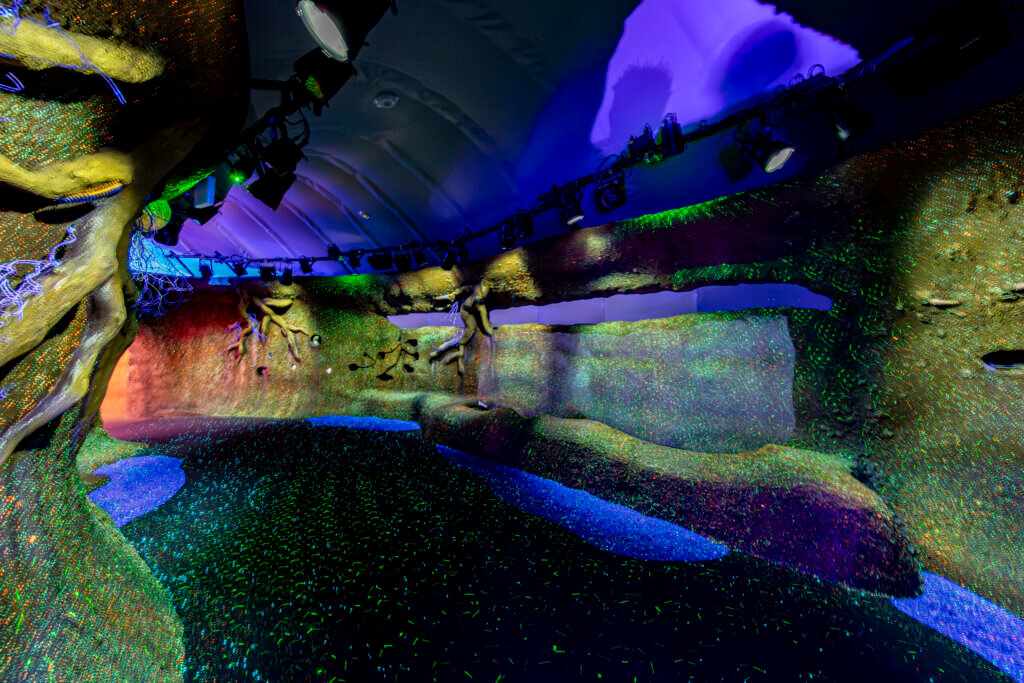
Wonder Earth: The microbial world you didn’t know
“Wonder Earth” is an immersive exhibit that makes you feel as if you’ve shrunk down and slipped into the soil. Microorganisms and tiny creatures hidden underground spread out before you from an underground perspective.
You can experience life in the soil at different scales—the nest of a mole, a marching line of ants, even the feet of people standing above ground—through a multi-sensory setup that engages all five senses. Don’t miss the message from Black Jack waiting for you at the exit.
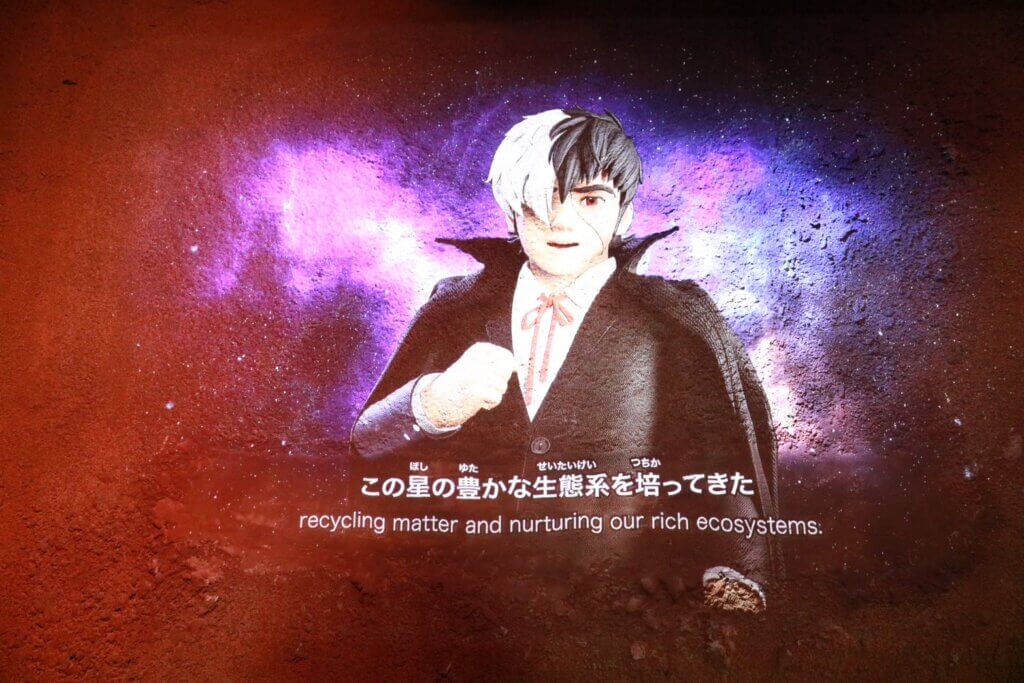
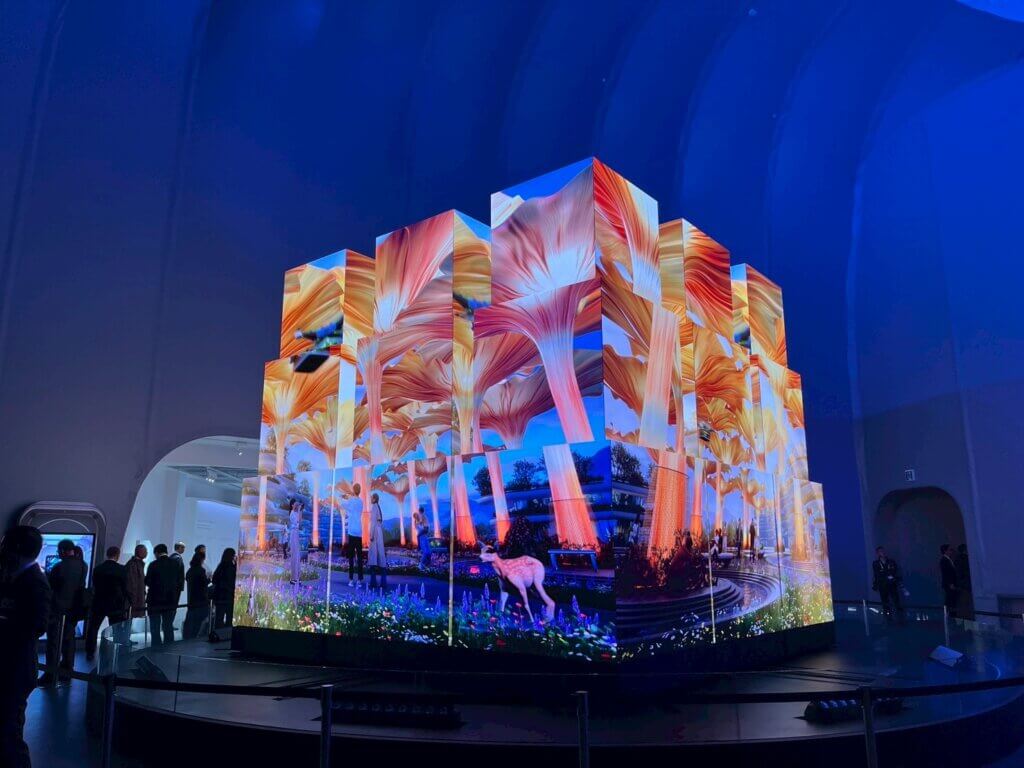
Editor’s Note: To enjoy the Expo in full, seek out the intent behind it
A world expo is like a grand national cultural festival. In this space packed with many kinds of “interesting,” everyone is bound to discover something new. Behind that lies the fact that each pavilion has been conceived and designed over six years. You start to notice that it is not the work of a single company, but a collaboration among universities, partner firms, artists, and musicians. Because each contributor engages seriously with the pavilion’s theme, we get to see the very best of what’s possible.
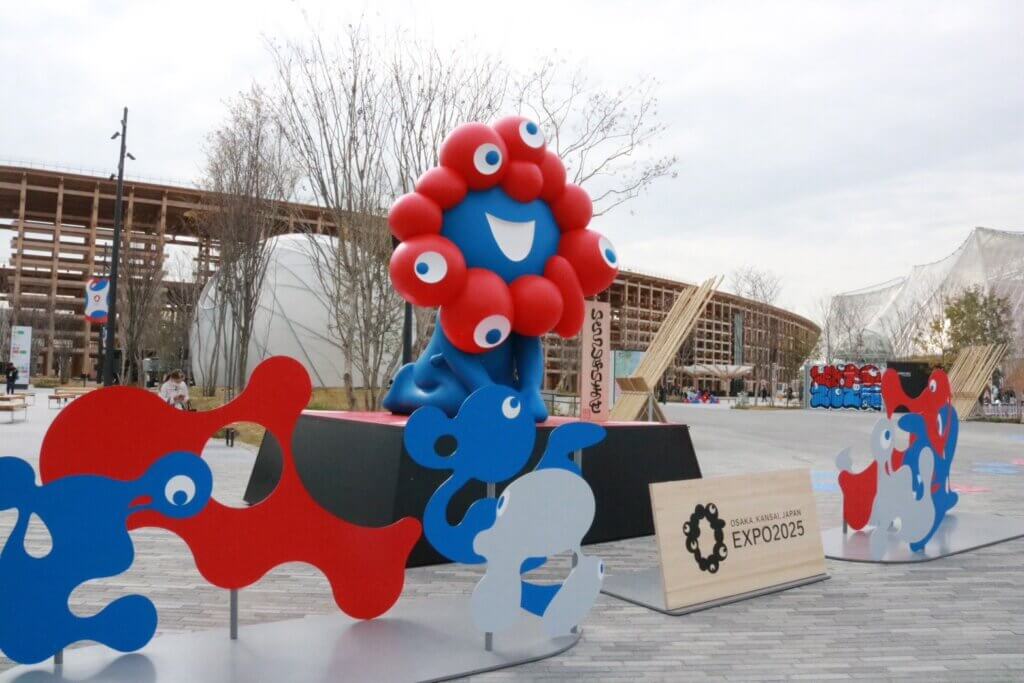
Walk the venue asking yourself, “Where’s the spark here?” and the experience becomes more than technology or art—you begin to feel the intent itself. I hope as many people as possible will see it, feel it, and enjoy it.
Pasona Group is also linking initiatives beyond the venue to Awaji Island, where it has its headquarters. A limited-period high-speed boat, the PASONA NATUREVERSE, is scheduled to operate between the Expo site and Awaji Island starting April 13. There are also online tours for children who cannot attend in person and corporate travel programs along the west coast of Awaji. These multi-pronged efforts are worth watching alongside the on-site exhibits. Looking at both the in-venue and off-venue initiatives makes the Expo’s theme—Designing Future Society for Our Lives—feel even more three-dimensional.
-
BitSummit The 13th in Kyoto — Business Day Highlights: Standout Indie Games from Japan and Overseas (Even If You Couldn’t Attend)
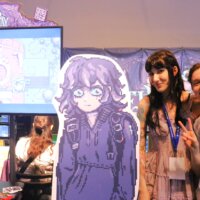
-
Column: My First Visit to the Nintendo Museum on Foot — Impressions and a Local’s Perspective



